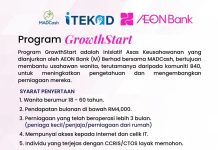By Simon Liau, Founder and CEO of Finworld Technology
When the topic of investments come up, whether in casual conversation or a business board room, the counsel would usually be to stick to the tried-and-true investment principles. Buy low and sell high, buy and hold, the 60/40 approach — practise them enough and you’ll eventually be able to make profitable judgement calls based on the elusive ‘investor instinct’ alone.
Aspiring startup owners are likely to have this seared into the backs of their heads (mine included); some may also believe that these strategies are more credible because they have withstood the test of time. There is some truth in this, as track records show.
But on the flip side, I believe the unchanging nature of these approaches are why they are no longer truly viable, especially for startups and its founders, many of whom are likely investing for the first time. The investing landscape is not only cutthroat and reactionary, but also prone to drastic fluctuations at the drop of a hat — proof that it takes something more than just concepts to make impactful, effective investments.
I learnt this the hard way, when I dived into the world of investing and entrepreneurship with Finworld, and resurfaced to find a disaster. The company was wrestled away from me, my team and shareholders jumped ship, and I found myself alone in a room with a bankruptcy notice.
That was far from how I expected my 20s to go. But that cruel reality also forced me to confront a question that eventually would go on to change the trajectory of both my professional and personal lives: what is stopping business owners from making good investments, and how can we help change that?
Numbers don’t lie — if they’re updated
As I reflected on how quickly the tides turned against me, I came to realise that the greatest hurdle plaguing business owners and their forays into investment is speed.
Keeping up with the market’s constantly changing conditions is no easy feat even for the most experienced among us, what more for startup owners who can sometimes be juggling the demands of a fledgling business all by themselves.
The investment landscape is unpredictable at best and reactionary at worst — and with the market changing every day, aspiring investors are hard pressed to process this information accurately enough, quickly enough.
In the same vein, the resources intended to guide investment decisions can be outdated or unable to truly capture the fluidity of the situation in a particularly challenging climate.
It’s all too easy to miss opportunities or make sub-optimal decisions when the resources themselves are playing catch-up with a rapidly evolving market — I myself struggled to apply the concepts I thought were foolproof to the investments I made at the time.
Business owners need a resource that can reflect the speed of changing market data, and — perhaps most importantly — make sense of that data in live time to help make more informed investments.
Coming to terms with this was the beginning of a renewed Finworld, which I rebooted from the ground up to now focus on penetrating the business-to-business (B2B) market.
As so many Malaysian companies were (and still are) struggling to make headway with skyrocketing operational costs, I realised there is a pressing need for data-driven investment education to be made more readily available to business owners.
“Data-driven” may be a big buzzword. But at the heart of it, I believe what it really means is to leverage technology like artificial intelligence (AI) to go beyond simply analysing the current data — but also to uncover obscure insights, independently chart projected patterns, and update those projections live.
To effectively dabble in data also means that that analysis has to be holistic. Qualitative market analysis will provide a more granular understanding of why the market behaves a certain way, and this will go hand-in-hand with quantitative analysis and what the fiscal results are of that behaviour.
AI has the capability to parse the results of these analyses and produce intelligent, informed insights — all of which can provide different considerations depending on the type and nature of investment. Just to name a few: volume analysis identifies the best times to enter the market; sector benchmarking evaluates investment candidates within a certain sector; and the Thames River Indicator (TRI), which is a Finworld-exclusive function, determines risk levels down to a particular stock to produce safer trading strategies.
I realise that a failed business is a heavy price to pay to have learnt all this! But in hindsight, living through that experience is the whole reason why Finworld is driving this technology and education in Malaysia.
We may now be Bursa-certified and privileged enough to have come back from bankruptcy, but the awards and titles come second to the goal: of ensuring that data is deciphered well enough to do away with the dire financial straits that no business owner should have to trudge through.

























